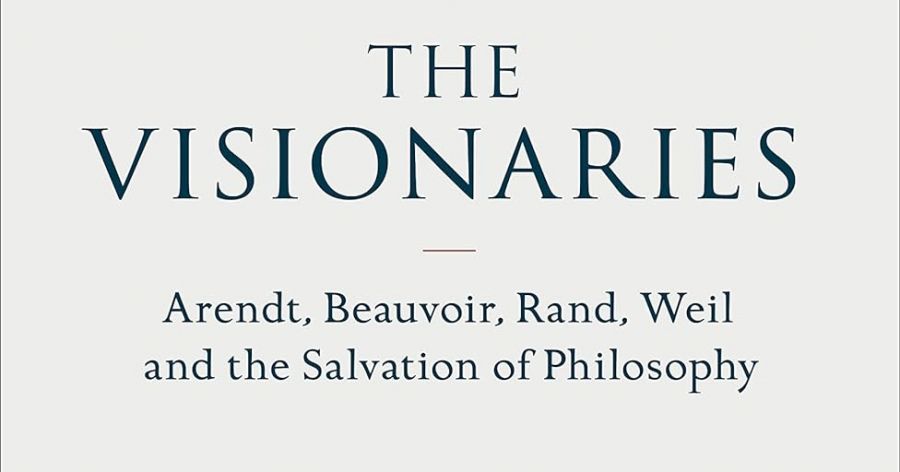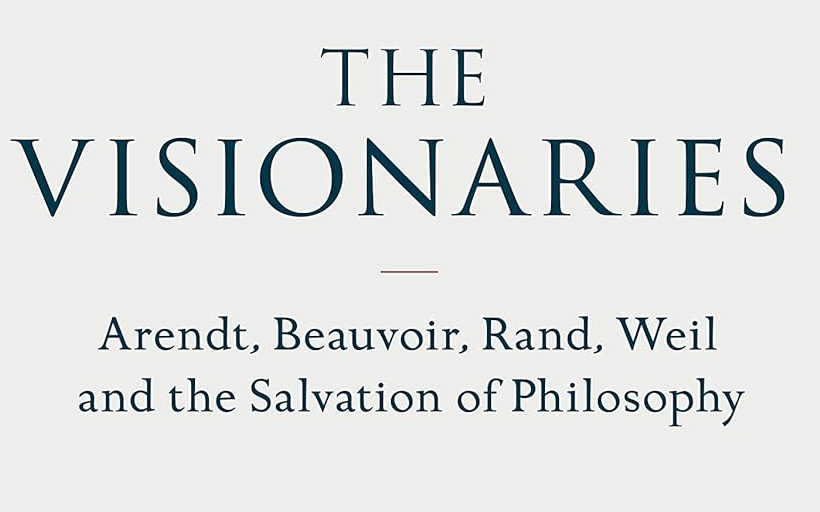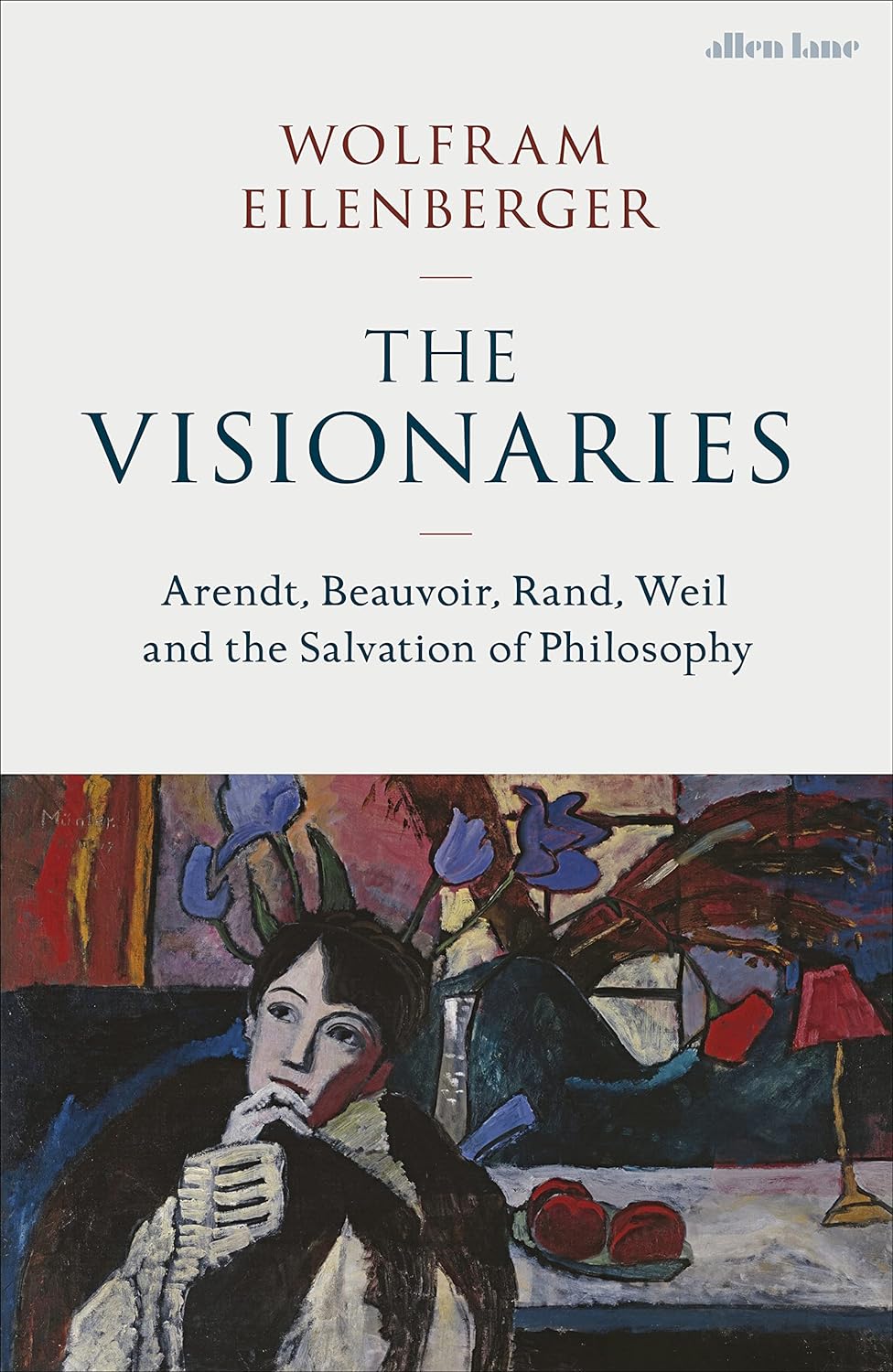
- Free Article: No
- Contents Category: Literary Studies
- Review Article: Yes
- Article Title: Tense expectations!
- Article Subtitle: Wolfram Eilenberger’s new prosopography
- Online Only: No
- Custom Highlight Text:
Wolfram Eilenberger’s previous book, the bestselling Time of the Magicians (2020), explored the four Germans – Ernst Cassirer, Walter Benjamin, Martin Heidegger, and Ludwig Wittgenstein – who ‘invented modern thought’. The Visionaries keeps to the formula, this time with women in the lead roles. It is described as a group biography, but Hannah Arendt, Simone de Beauvoir, Ayn Rand, and Simone Weil were very much not a group. Nor is it a biography: there is scant biographical information and no analysis of why they lived as they did. Apart from being born at the same time, writing books, and sharing what Eilenberger calls an ‘honest bafflement that other people live as they do’, the quartet have nothing in common: Arendt was a German Jew escaping the Gestapo; Beauvoir a French intellectual on a mission to enjoy herself; Rand a Russian émigré refashioned as an American neoliberal; and Weil a latter-day Joan of Arc. The closest any of them came to meeting was when Beauvoir, for whom the existence of others was ‘a danger to me’, was introduced to Weil, who had wept at the news of famine in China. It did not go well. The only thing that mattered, Weil announced, was a revolution to feed the world’s starving, to which Beauvoir ‘retorted that the problem was not to make men happy but to find the reason for their existence. She looked me up and down. “It’s easy to see you’ve never been hungry”, she snapped. Our relations ended right there.’
- Featured Image (400px * 250px):

- Alt Tag (Featured Image): Frances Wilson review ‘The Visionaries: Arendt, Beauvoir, Rand, Weil and the salvation of philosophy’ by Wolfram Eilenberger, translated by Shaun Whiteside
- Book 1 Title: The Visionaries
- Book 1 Subtitle: Arendt, Beauvoir, Rand, Weil and the salvation of philosophy
- Book 1 Biblio: Allen Lane, $55 hb, 400 pp
- Book 1 Cover Small (400 x 600):

- Book 1 Cover (800 x 1200):

Spanning the decade between 1933 and 1943 (the growth of the Nazis, the Spanish Civil War, Stalin’s show trials, the birth of Zionism, the Holocaust), The Visionaries is divided into eight parts which dip into and out of the thoughts and activities of its main players. Beauvoir, with The Second Sex brewing inside her, is gathering the material for She Came to Stay, about her and Jean-Paul Sartre’s intricate relationships with the sisters Olga and Wanda Kosakiewicz. Arendt is immersed in Rahel Varnhagen: The life of a Jewess. Rand is preparing her magnum opus, The Fountainhead, and Weil is working on her long essay ‘The Iliad: A Poem of Force’. In Part One of The Visionaries, ‘Sparks’, we find ‘Beauvoir in a mood, Weil in a trance, Rand in a fury, and Arendt in a nightmare’. The eight parts are subdivided into numerous sections with titles like ‘In the Cul de Sac’, ‘Tense Expectations’, ‘Airtight’ and ‘Message in a Bottle’. ‘Sparks’ begins with Beauvoir sitting in a café watching the passersby, ‘each one a private consciousness … The thought sent shivers down her spine.’ Later, when she and Sartre are spending a happy August in the Côte d’Azure, ‘time itself seemed to hold its breath’. The blame for sentences like this can’t entirely lie with the book’s translator, Shaun Whiteside, because the sloppiness of Eilenberger’s writing is evident throughout. What, for example, is ‘a thoroughly heteronomous heteronomy’? And what does he mean when he says of Arendt, in the subsection of ‘Sparks’ called ‘No Banisters’, that ‘When it came down to it, she had always found enough fire within herself to forge her journey into yet a new life’?
Eilenberger has few clear thoughts of his own, but he is a good enough guide to the thinking of his subjects, flitting between the Existentialism of Beauvoir and Sartre, the Objectivism of Ayn Rand, Weil’s revolutionary mysticism, and Arendt’s understanding of pariahs and parvenus. He knows that Rand, whose execrable prose he quotes at length, cannot be spoken of in the same breath as Weil. If the sainted Weil is the book’s superego, the hedonistic Beauvoir its ego, and Arendt the representative of reason, Rand speaks for the primitive urges of the Id. Whenever he describes Rand’s achievements, Eilenberger includes exclamation marks to show that he doesn’t take them seriously: ‘Rand had a clear vision of her artistic goal: philosophy for all, at the highest level – captured in the form of screenplays and novels with the potential to be bestsellers!’ Woman on Trial was ‘her first American publication of any kind! … Now her own name shone out in big glowing letters onto the boulevards of Hollywood!’
It is the myopic, impractical, utterly brilliant, and superhumanly courageous Weil, who died of tuberculosis and self-starvation at the age of thirty-four, who steals the show. ‘I am finished, broken, without all possibility of mending,’ she wrote in her final letter to her parents, and she wasn’t exaggerating. Given her unearthliness, it is ironic that Weil is the only three-dimensional figure in the book. So committed is Eilenberger to her cause that the three other women take on the role of foils. I suspect that he wanted to write a book about Weil, but his publisher thought it wouldn’t sell.
To make ‘direct contact with life’, Weil tries stamping out metal shapes in a factory but can’t work the machines; because she gives away her wages, her despairing mother hides money in the pockets of her daughter’s clothes. She argues with Lenin but houses him nonetheless; her unit in the Spanish Civil War agrees that she should not carry a gun, let alone load one; the only cure for her agonising headaches is to listen to sacred music; she finds in the Iliad a demonstration of the violence of war. Even before war turns us into corpses, Weil argues in this luminous essay, it turns us into ‘things’. ‘Somebody was here, and the next minute there is nobody here at all; this is the spectacle the Iliad never wearies of showing us.’ Arendt, in her analysis of concentration camps, came to the same conclusion: the totalitarian goal of total objectification was ‘the preparation of living corpses’.
Despite being about thinking in dark times, Eilenberger does not think about his thinkers as women. This is the book’s major flaw. Everything Arendt, Beauvoir, Rand, and Weil did, and everything they thought, was tied to their gender, as is everything we think about them. Beauvoir, for example, is never discussed without the inclusion of Sartre, about whom there is more than enough in The Visionaries, including a reference to his baldness as ‘doubly violent because it hinted at the last and insurmountable insult to his existence’. When Eilenberger wonders in his final sentence why Weil’s work ‘is generally ignored by academic philosophy’, it seems barely worth answering that it is because she was not born a man.


Comments powered by CComment